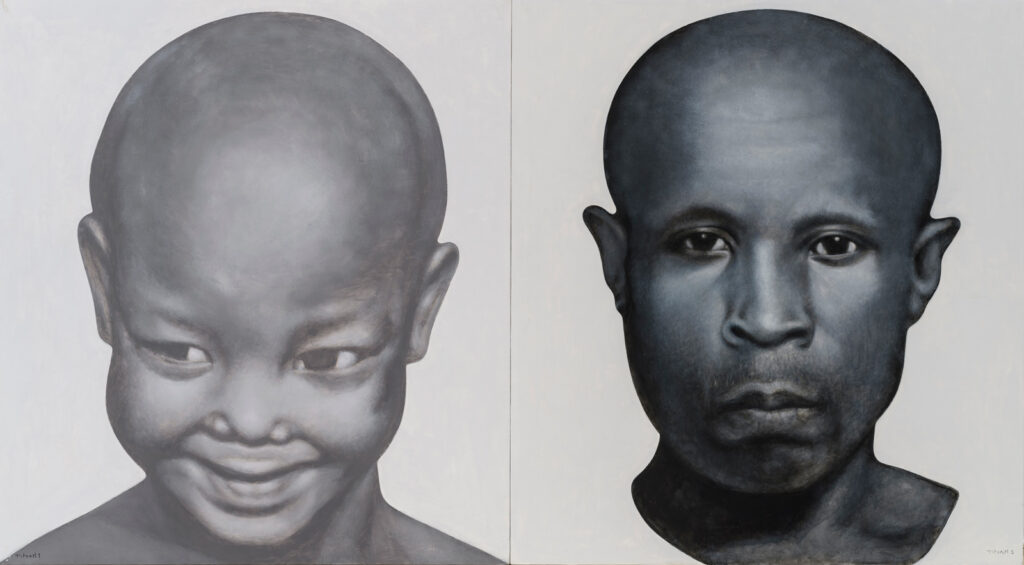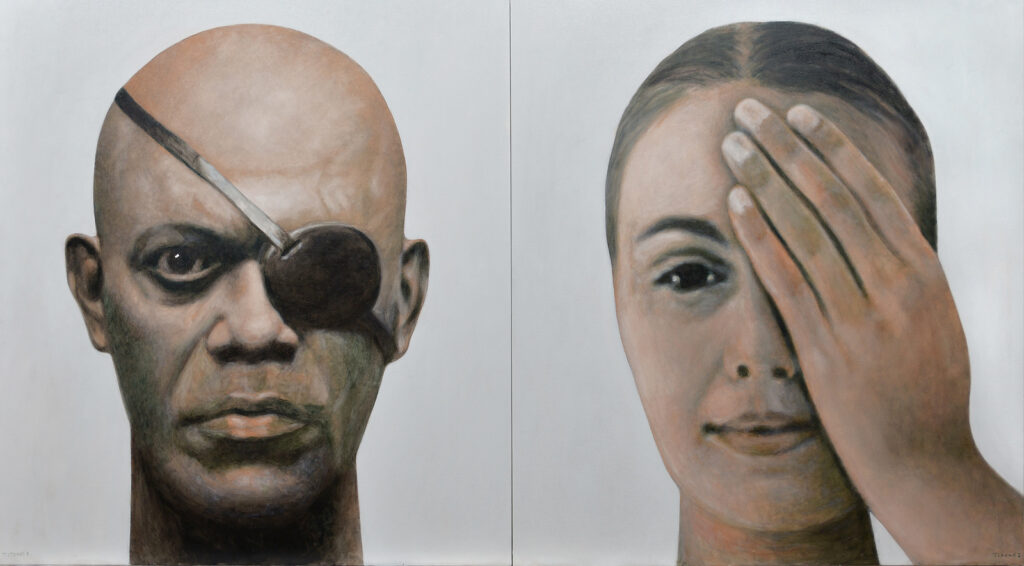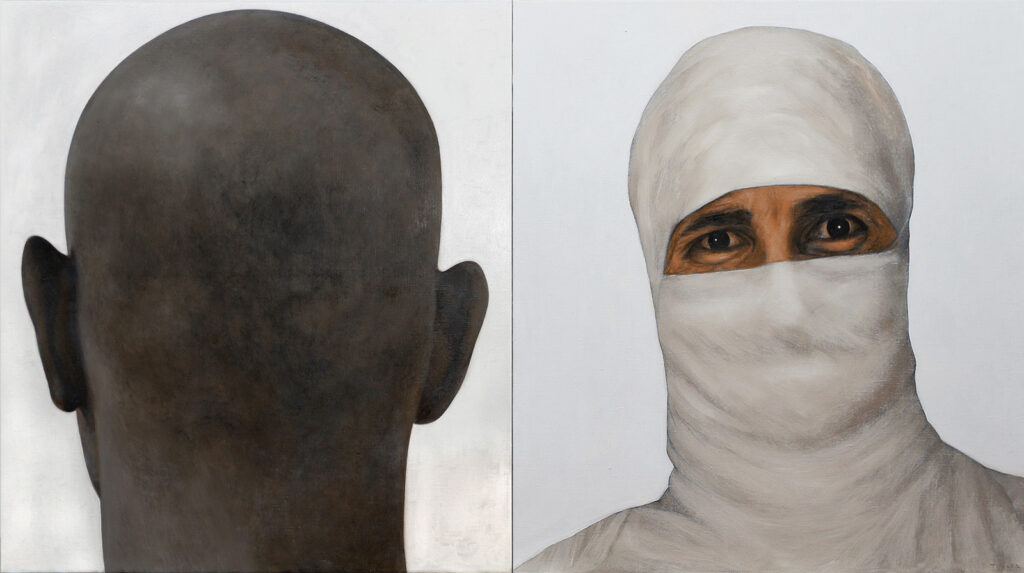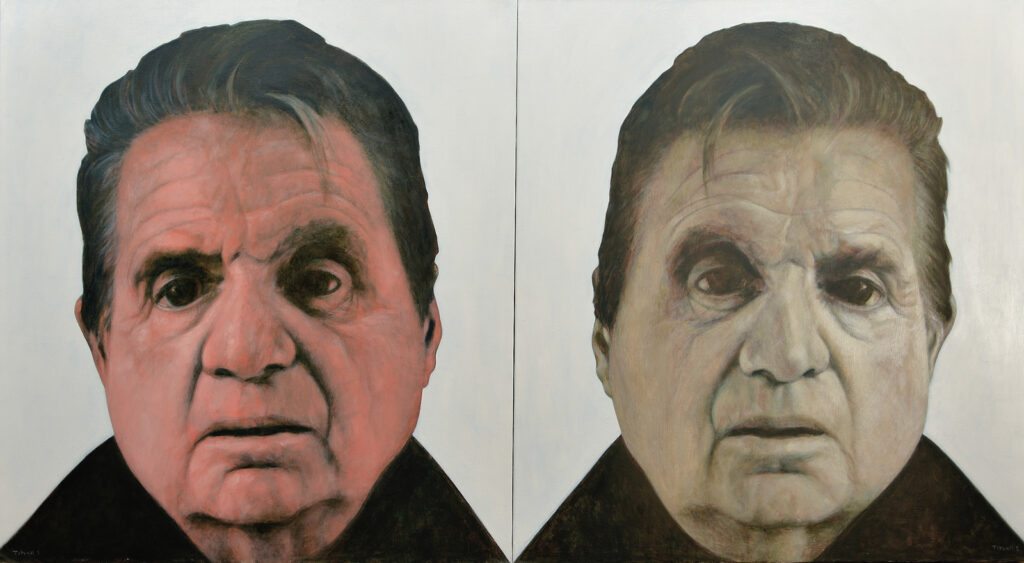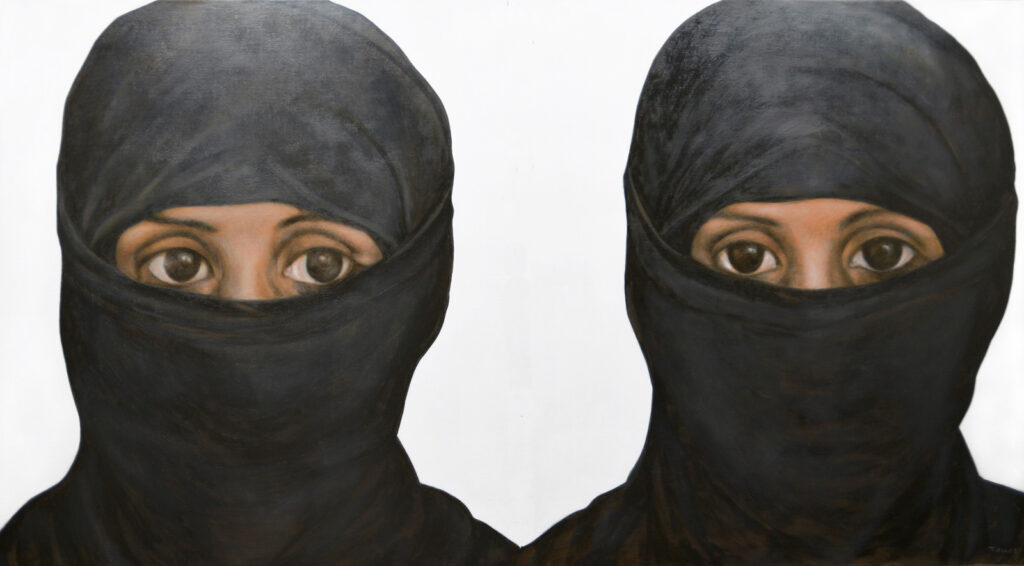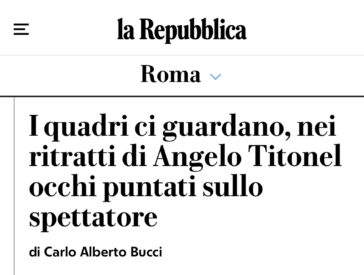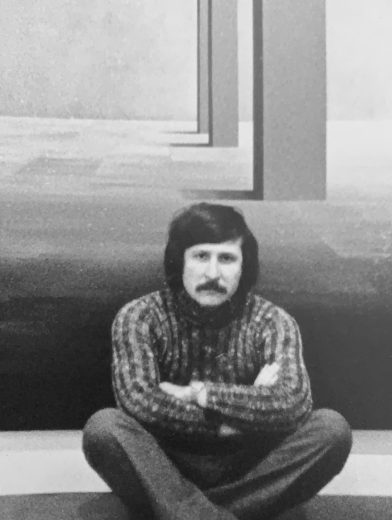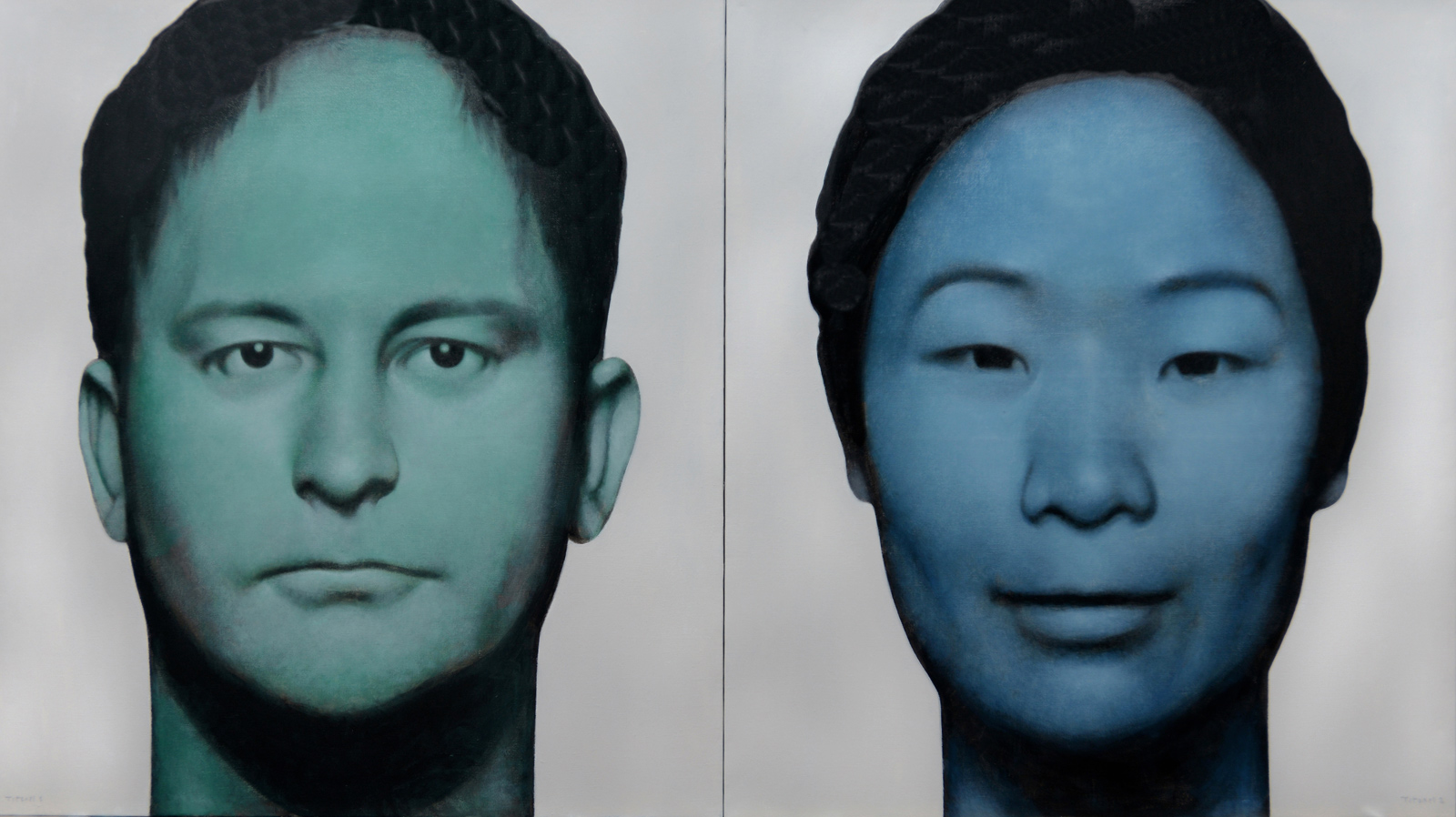
Maja Arte Contemporanea is delighted to display – for the first time – a series of ten large scale diptychs (oil on canvas/wood, 105 x 190 cm, each) painted by Italian artist Angelo Titonel (1938 – 2018) between 2017 and 2018, before his sudden death on October 7.
As Lorenzo Canova notes: “One of the most remarkable figurative artists in his generation, Angelo Titonel can be placed alongside noteworthy exponents of both European realism and American hyperrealism without fear of being overshadowed. He shares many of their distinctive traits, while keeping the originality of both his style and his conceptual vision.”
In this show, twenty faces painted by Titonel ‘observe’ us. They are portrayed in pairs forming a veritable installation, that “has all the characteristics of conceptual art; it is reminiscent of photography but adds to it an ‘existential’ touch that derives from the color and the painter’s hand as they come together on the canvas”, as Canova remarks in his critical text.
“Titonel composes his narrative blending ethnicities and geographies, continents and traditions, East and West, South and North, leaving to the viewer’s eyes the task of bearing witness to stories that are unknown but whose outcomes we can intuit in the faces of the women and men who gaze at us from a time suspended, caught between the rapid urgency of the present and the suspension of a parallel dimension. […]
In a world dominated by visual communication in its most ephemeral and transitory form, Titonel’s legacy is his dense and deep inquiry into the psychological, physical, and cultural dynamics of sight. He explores the confines between the digital space of contemporary media and the new potential for metamorphosis and action in painting. He reflects on the age-old role of artist-observer, still devoted to an invisible thread linking the observer and the observed within the circular meanders of a labyrinth of entwined observation and reflection.”
This exhibition is intended as the first of a cycle aiming at exploring Angelo Titonel’s vast artistic production over the years. Each exhibit will focus on a specific series of works from the 1970’s until 2018.
Selected works
Gallery
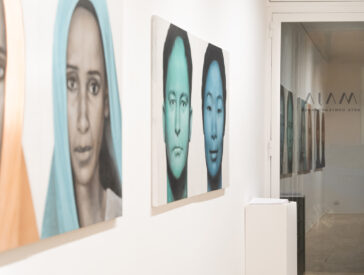

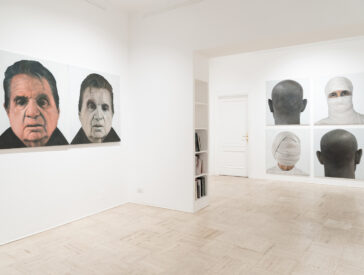
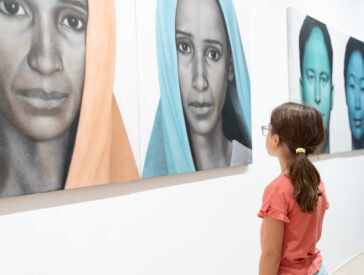

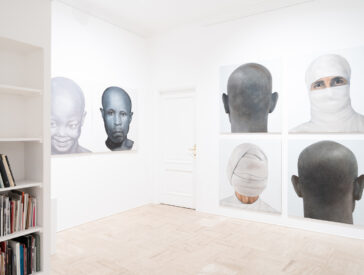


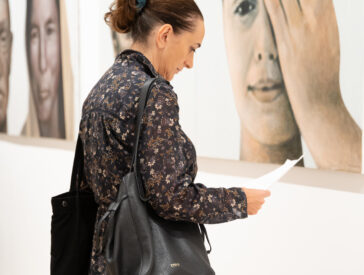
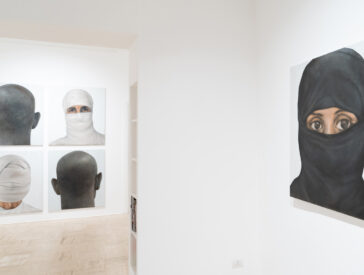


Critical essay
THE EYE OF THE OBSERVER
By Lorenzo Canova
One of the most remarkable figurative artists in his generation, Angelo Titonel can be placed alongside noteworthy exponents of both European realism and American hyperrealism without fear of being overshadowed. He shares many of their distinctive traits, while keeping the originality of both his style and his conceptual vision.
Already in the 1970’s, Titonel’s work was marked by a distinctive iconic potency; an incisive structural synthesis. In his works, a proximity with photography bleeds into a hyperrealistic glance. The latter is caught in the metaphysical stasis of emptiness and shadows, of architectural shapes and magical, hallucinated objects, of the mysterious relationship between empty volumes and figures existing in space.
In those early years, Titonel frequently painted pictures of people wearing divers’ masks, workers’ goggles, or pilots’ helmet’s; perhaps, these were a study on metaphysical mannequins or apparitions of an artificial humanity. In such paintings, the face and gaze seemed willingly concealed or denied; yet, the works’ structural design yielded an accurate investigation into perception.
It is thus not a chance, perhaps, if, years later, this specific cycle of paintings was preceded by another series (in the first decade of this century) where Titonel concentrated his attention on human and mechanical hands, using these to shape a silent language, one where the fingers form soundless words outside of a coherent visual narrative.
Thus, following yet another cycle on solarized faces, this series stands out as a natural culmination of his research. Completed between 2017 and 2018, shortly before his sudden death, the series closes his long career. And yet, it reads more as the regretfully-interrupted opening of a new line of inquiry.
The trait that consistently distinguishes Titonel’s work is his ability to establish a stern architectural potency at the heart of his images; in his early works, this is given by buildings, stations, or trains emerging from the shadows whose precise clarity comes from the sophisticated design holding them together.
What stands out as a transformation in these new works is, instead, in the stark white in which the protagonists are immersed. This is a legacy from his solarized series. Here, however, it is distinguished by the realistic precision with which the traits of the men and women are depicted, seemingly forming a single, uninterrupted reflection on the power of the gaze.
The paintings are introduced by their eloquent titles: Observing or The Gaze. They are then developed into a single work consisting of multiple elements. The series becomes a long polyptych comprising ten diptychs, placed along the wall as the stages of a silent story or, better, of a reflection developed through the language of painting, able to shape concepts as no other medium can.
Writing and words stagger before this succession of eyes and faces which are in turn exposed, covered, and denied. They are placed in a dialogue with anthropology, philosophy, sociology so as to scratch past the opacity of reality with the single burning urge of revelation.
Titonel wittingly combines references to the media and allusions to daily life; celebrities and ordinary people. His mosaic portrays the complexity of our world very well, capturing challenges in communication as well as its potential, cultural contaminations as well as the clashes between peoples and cultures.
All this is brought to light through the eyes, even when these are concealed or invisible. Eyes become a primary tool through which to create a relationship (not just for the painter). Titonel wittingly places them at the heart of these works; this is especially true when one eye is hidden – as is the case with Nick Fury’s black eyepatch or the hand of a girl covering one eye – as the other gains even stronger expressive power.
The series works as an installation and has all the characteristics of conceptual art; it is reminiscent of photography but adds to it an ‘existential’ touch that derives from the color and the painter’s hand as they come together on the canvas.
Titonel plays art’s game with reckless awareness; he pays homage to his viewer-observer, the true protagonist of his works, as they silently observe the works. He also pays homage to the work of the artist, also an observer, who then crystallizes a memory of those observations on the canvas.
In this context, the dialectic between calm and brutality, sweetness and horror becomes incessant. Poignantly, this series of works finds its roots in the works of Francis Bacon, one of the most prominent interpreters of the cruelty and violence which underlie both power dynamics and the torture chambers of ordinary daily life.
Titonel composes his narrative blending ethnicities and geographies, continents and traditions, East and West, South and North, leaving to the viewer’s eyes the task of bearing witness to stories that are unknown but whose outcomes we can intuit in the faces of the women and men who gaze at us from a time suspended, caught between the rapid urgency of the present and the suspension of a parallel dimension.
This journey finds its heart in the two diptychs The Glance (Bandaged Head and Semi-bandaged Head, 2018) where the glance seems almost absent given the nature of the heads, turned and accompanied by two bandaged figures only one of whom has free eyes. The latter communicates a powerful, anguished message: an apparition emerging from the prison of bandages.
In a world dominated by visual communication in its most ephemeral and transitory form, Titonel’s legacy is his dense and deep inquiry into the psychological, physical, and cultural dynamics of sight. He explores the confines between the digital space of contemporary media and the new potential for metamorphosis and action in painting. He reflects on the age-old role of artist-observer, still devoted to an invisible thread linking the observer and the observed within the circular meanders of a labyrinth of entwined observation and reflection.


